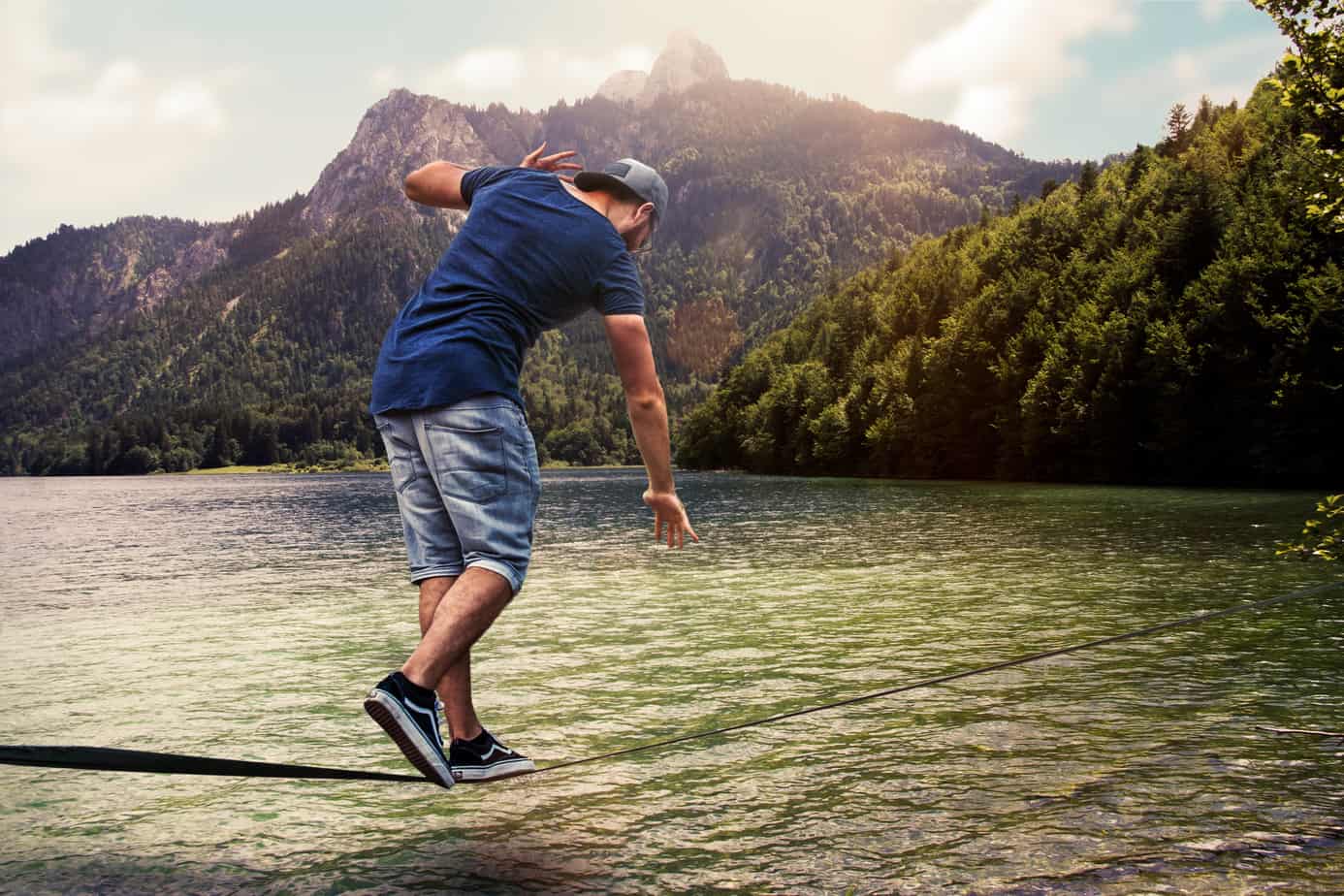Can you slackline in the rain or is it best to avoid it because of the safety factor and to avoid getting the slackline wet?
You can slackline in the rain but take care as the line can become slippery. You may get better grip on the slackline by going barefoot but you can also wear shoes if that’s what you prefer. Some slackliners set up a tarp over top of the slackline to protect against rain.
Cleaning and properly drying the slackline afterwards is really the issue that needs to be taken care of to ensure the lifespan and usability of the slackline long term.
Dirt and a bad smell can develop on both vinyl and polyester slacklines so it’s important to wash and then dry a slackline after use.
Can you leave a slackline in the rain?
It is not recommended to leave your slackline in the rain or outside at all for that matter. Storing it indoors in a dry cool place after cleaning it is highly recommended.
Polyester and nylon are the two most common materials used to make slacklines with polyester being the more popular of the two. Both polyester and nylon are known for their durability, strength and flexibility which is largely why they are the common materials used by slackline manufacturers.
Having said that, both polyestery and nylon absorb water and over time will degrade if they are allowed to remain damp.
What does the research tell us about getting polyester or nylon wet?
In general terms both polyester and nylon have some waterproofing abilities but both absorb water unless coated with an external barrier or protection of some kind.
Slackline manufacturers such as GIBBON recommend only washing your slackline with cold water and little to no detergent with a neutral soap preferred.
Drying and storing a slackline is key
While slacklining over water, during the rain or even winter (more on that below) are common activities that can get a slackline wet, it is important to note that these activities are generally fine to take part in. It’s the drying and storing of the slackline after it gets wet that is the important part.
After a slackline gets wet, air dry it until it is completely dried before rolling it up and packing it away in a bag. Store in a dry and cool place.
Clean the slackline with cold water and a neutral soap if required first. Follow manufacturer instructions regarding cleaning but in general terms, a mild soap is preferred. Harsh detergents should be avoided as they can damage slackline webbing fibers.
Final thoughts
You can slackline in the rain with care. The slackline can become slippery when wet so do be careful.
Whether you slackline with shoes or barefoot is up to you. You might find that slacklining barefoot in the rain gives you better grip and feel of the wet slackline. Wearing a pair of quality slacklining shoes – if that’s what you’re used to – may be preferable for maintaining balance in wet conditions.
Cleaning and drying the slackline out properly after use is the part you really do want to concentrate on when you’re done. Caring for your slackline will help to maintain its usefulness and can extend its lifespan too.
Can you slackline in the winter? We discuss why slacklining in the snow has its advantages while presenting a new set of challenges too!
Recent Posts
Slacklining is a challenging activity that involves walking, balancing, and performing tricks on a flat piece of webbing stretched between two anchor points. It has become increasingly popular in...
Slacklining is a fun and challenging way to improve your balance, core strength, and overall fitness. Whether you're new to slacklining or a seasoned pro, incorporating a slackline workout routine...


